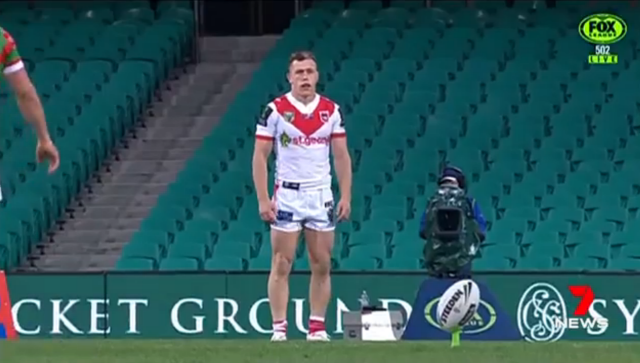In this guest post, Olaf Pietschner, Managing Director of Capgemini in Australia and New Zealand explores the impact of COVID on sport and how this is changing how customers and brands interact, as well as attitudes towards emerging tech in sport.
Reimagining the Virtual Fan Experience post COVID-19 by Olaf Pietschner, Managing Director Capgemini Australia and New Zealand A love of sport is a common feature of many Australians. It is part of our psyche and something that binds us together.
Nielsen reported that live sport dominated Aussie TV viewing with 16 of the top 20 TV programs being a live sport, but embracing upcoming technologies could revitalise interest and include a younger audience as part of the growing conversation. A major discussion topic during COVID and now as we slowly go back to normal is the recommencement of major sports in Australia and New Zealand from NRL, AFL, Cricket to A-League and Formula 1.
According to recent Capgemini research, despite 68% of Australian fans agreeing that emerging technologies have enhanced their viewing experience inside and outside the stadium, only 35% of Australian fans prefer to watch sports over digital devices. This is the lowest of all regions surveyed compared to an 80% average of Asia Pacific.
All instadium experiences such as social media and live updates are well below the global average for Australian usage – yet Australia convincingly has above-average stadium attendance frequency for all age brackets and an overwhelming 43% above the global average for attendees over 80. This has been changed temporarily and possibly forever due to the recent pandemic.
In Australia, the most common experience that fans have had with technology outside the stadium is streaming matches live on VR to simulate in-stadium experience at 24%, as compared to the global average of 40%.
With the current global situation, this could all set to change as we see the professional sports landscape facing serious headwinds on how sports will be consumed and delivered to the high expectations for entertainment experiences. To retain existing fans and breathe new life into the sport for a younger audience, the Sports Experience will need to innovate and embrace a multiplicity of preferred consumption modes that appeal to multiple demographics.
Investments in emerging technologies such as augmented and virtual reality, artificial intelligence, biometrics, or platforms such as Twitch, have proven to enhance the overall viewing experience, both inside and outside the stadium, and new ways to reach younger audiences are in abundance. The rise of esports is an important part of the sports mix, averaging 34% of sports fans having watched esport, and 23% found to have played one.
Investing in technological innovations could deepen the link to the game for all fans and bring newfound passion among a younger audience. One of the global leaders in this area has been Formula 1, which launched its esports series in 2017 and has expanded it since.
Most recently, Formula 1 flagged off its virtual Grand Prix in March 2020 with a great deal of fanfare, entertaining their fans and possibly gained the attention of a much wider audience. Other major traditional sports leagues and teams have also in recent months staged virtual live stream events – Bundesliga organised a ‘Bundesliga Home Challenge’, while a Fifa20 tournament involved esports professionals and footballers to entertain fans and raise funds for the NHS.
Closer to home, the NRL had some of their players from West Tigers and Canterbury, contest their Round 3 NRL clash on the popular online game, Fortnite, in a bid to maintain fan engagement. In the short term, as sport re-emerges from the shutdown (Bundesliga, the world’s first major soccer league returned to action last month and the NRL set to see small crowds in NSW from this weekend), a new or modified format of sporting event leveraging technology such as augmented reality to create a ‘live in-stadium atmosphere’ experience might just be the new normal.
In time, sport will resume, albeit perhaps in different forms than we are used to, which may present opportunities in the future. With the Australian Government’s focus on delivering a high-performance system focused around sports, teams, and athletes with world-leading technology by 2030, mainstream technological support needs to change to support technology usage amongst this diminishing segment of young live sports fans. Australian sport will undoubtedly be entrenched in Australian culture for a long time and maybe now is the time they change the way they play the technology game to embrace disruption and innovation to reach its full potential with the next generation of fans.








